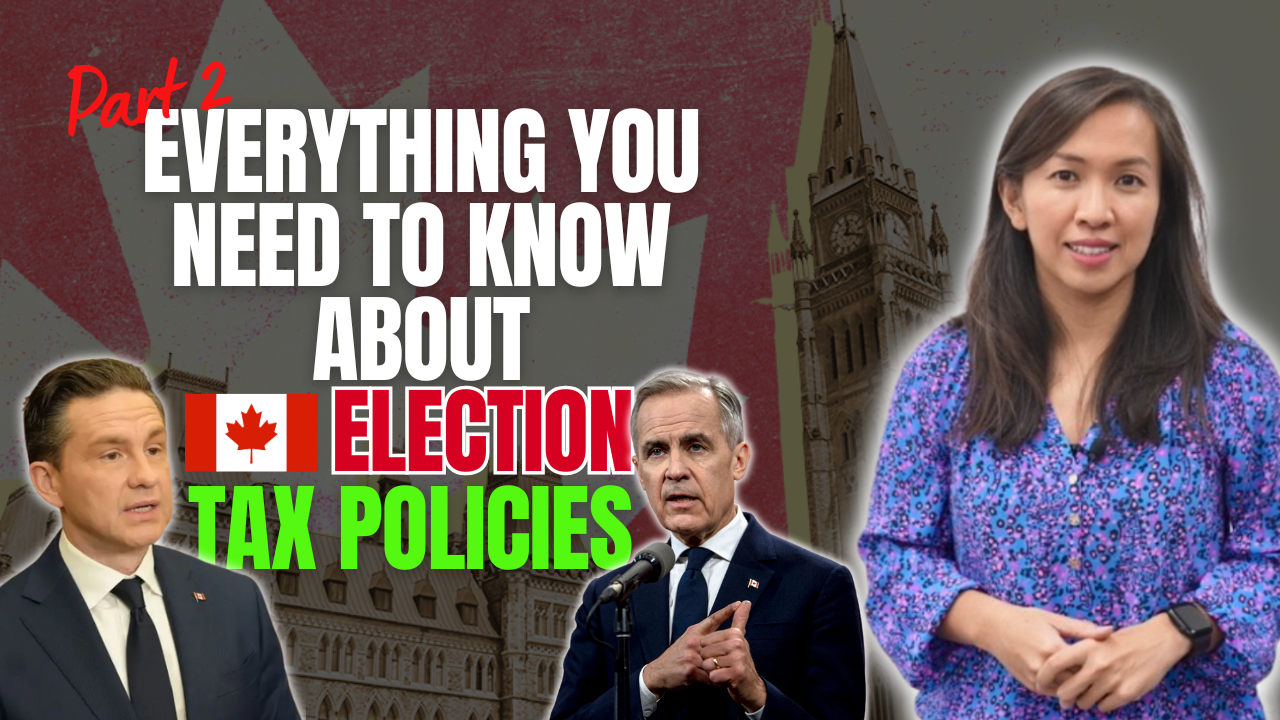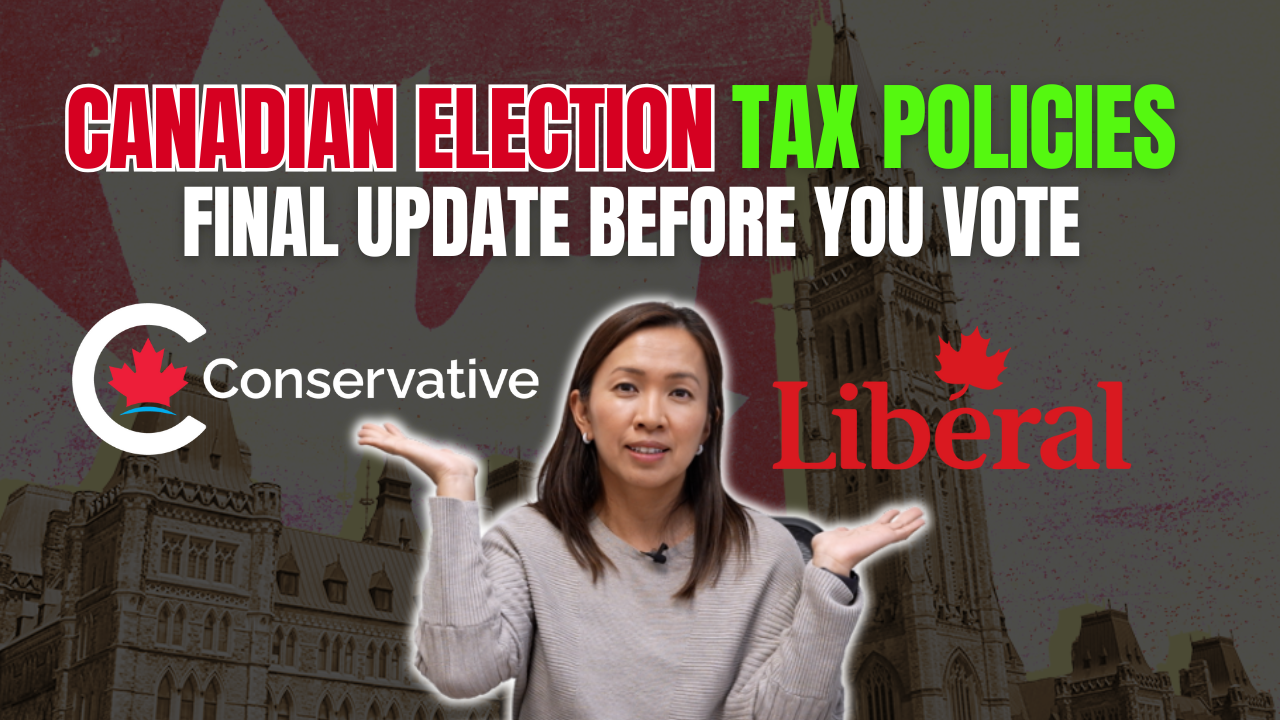It’s been a few weeks since I published my initial deep dive into the 2025 election tax policies. In that time, both the Conservatives and Liberals have released several new proposals that could reshape how we earn, invest, and build in Canada. Below, I break down nine key policies announced since the last post, and explain what they mean for you.
Capital Gains Deferral on Reinvestment in Canada
On March 30, 2025, Pierre Poilievre proposed a Canada First Reinvestment Tax Cut — allowing Canadians to defer capital gains taxes if they reinvest into the Canadian economy.
That includes:
- ✅ Active Canadian businesses
- ✅ Startups, expansions, job-creating enterprises
- ✅ Possibly even rental construction and Canadian equities (pending clarification)
Timing:
- Applies to reinvestments between July 1, 2025 and December 31, 2026
💡 It’s the closest thing we’ve seen to a Canadian version of the U.S. 1031 exchange — except this isn’t limited to real estate.
According to economist Jack Mintz, this could unlock $12.5 billion in reinvestment. And honestly? That’s believable. This policy doesn’t just delay taxes — it creates incentives for people to keep capital in Canada.
Contrast that with last year’s proposed capital gains inclusion rate hike to 66.67% — which didn’t even get introduced in Parliament and sparked a wave of investor exits.
We saw it firsthand: clients calling us daily asking how to leave Canada with minimal tax. Some did. Some didn’t. But everyone was thinking about it.
This new proposal? It flips that narrative.
TFSA Contribution Boost — With a Patriotic Twist
The Conservatives also proposed an additional $5,000 TFSA contribution room per year — on top of the existing $7,000 for 2025.
🛑 But there’s a catch: the extra room must be invested in Canadian businesses that employ Canadians and pay taxes here.
It’s designed to reward people who reinvest in Canada’s future, not just tax shelters.
This aligns directly with the capital gains deferral proposal — creating a tax-advantaged loop to sell, reinvest, and grow within Canada.
Remove GST on Canadian-Made Cars
- Conservative (Apr 3, 2025): Temporarily remove GST on new Canadian-manufactured vehicles to counteract U.S. tariffs
- Liberal: No policy.
🎤 “A direct response to trade pressure — protecting auto jobs.”
Overall Tax Reform
- Conservative (June 2024): Convene a Tax Reform Task Force within 60 days to deliver a “Bring it Home Tax Cut”:
- Lower taxes on work, hiring, and production
- Reduce taxes on low- and middle-income earners
- Cut corporate welfare and crack down on overseas tax havens
- Simplify tax rules to reduce paperwork by 20% citeturn0search1
- Liberal: No comprehensive reform plan announced.
🎤 “This is a systemic approach to tax relief — not just a tweak.”
Expanded Deductions for Traveling Trades Workers
- Conservative (Mar 29, 2025):
- Allow trades workers to deduct full costs of food, transportation, and accommodation, lifting the $4,000 cap and 50% meal limit
- Liberal (Apr 5, 2025): Expand the Labour Mobility Tax Deduction by reducing distance requirement from 150km to 120km and consult on increasing the deduction limit
🎤 “Fairness for workers — closing the gap between execs and trades.”
Eliminate Automatic Alcohol Excise Increases
- Conservative (Apr 1, 2025): Roll back alcohol excise duties to 2017 levels by axing annual inflation indexing under the Excise Act
- Liberal: No policy.
🎤 “Time to stock up on wine — and save!”
Restrict Corporate Aircraft Deductions
- Conservative (Mar 29, 2025): Limit corporate aircraft deductions to equivalent commercial flight costs, except necessary charters
- Liberal: No policy.
🎤 “Drawing a line between business necessity and luxury.”
Close Offshore Tax Loopholes
- Conservative (Apr 8, 2025): Task Force to shut offshore loopholes, redirect CRA resources to collect $1B+ annually, expand Informant Program to 20% rewards, and create a name-and-shame site
- Liberal: No policy.
🎤 “Going after the big fish — and rewarding whistleblowers.”
Reintroduction of MURB Tax Shelters
- Liberal (Mar 31, 2025): In its Housing Update, the Liberal government announced the reintroduction of Multiple Unit Residential Building (MURB) tax incentives—offering accelerated depreciation and tax credits for qualifying multi-unit rental projects to spur affordable housing investment citeturn6view0
- Conservative: No policy.
🏘️ What Are MURB Tax Shelters?
Yes — the MURB program is essentially a tax incentive for investors who buy multi-unit rental properties. Under the original scheme, you could:
- Accelerate depreciation deductions on building components (e.g., windows, roofing, plumbing) over much shorter periods than standard capital cost allowance rules.
- Offset rental income with these accelerated deductions, often creating a paper loss that reduced taxable income.
In effect, you could buy or build an apartment or rental complex, claim large depreciation write‑offs, and shelter other income (like employment or business earnings) from tax — even if the property generated cash flow.
Critics argued it became a tax shelter because:
- It allowed ghost depreciation, where deductions exceeded the property’s real economic depreciation.
- It encouraged short‑term flips purely for tax benefits, rather than long‑term rental operations.
Reintroducing MURB‑style incentives aims to:
- Boost rental housing supply by lowering the after‑tax cost of development.
- Attract private capital into new, long‑term affordable rental projects.
Other Liberals Measures related to Housing
Additional Liberal Measures from Carney’s Housing Plan
- Build Canada Homes (BCH): A new federal developer to build affordable housing at scale on public lands, targeting 500,000 homes per year.
- $25 B Prefab & Equity Financing: Low‑interest debt and equity for innovative, Canadian‑made modular builders (mass timber, softwood lumber).
- $10 B Low‑Cost Capital: Split into $4 B fixed‑rate and $6 B rapid‑build funding for affordable/supportive housing.
- Municipal Development‑Charge Cuts: 50% reduction for five years on multi‑unit residential projects (≈$40K savings per 2‑bed Toronto unit).
- Conversion Incentives: Tax relief for turning existing structures into non‑profit or land‑trust rental homes.
- Red‑Tape Reduction: Unified approvals, pre‑approved design templates, fast‑tracking proven builders, and simplified building codes.
What This Means
These nine proposals represent the most significant investor‑ and growth‑oriented policies we’ve seen this campaign. The Conservatives are offering systemic reforms and incentives to keep capital—and jobs—rooted in Canada.
Liberal Housing Plan Contrast:
Mark Carney’s housing strategy remains heavily government‑centric. While government‑subsidized homes can help low‑income families—as seen in Singapore and Hong Kong—given the Liberals’ lack of delivery over the past eight years, it’s fair to ask: will this be a genuine solution, or just another redistribution of wealth through bureaucratic inefficiencies?
Is it law yet? No. These remain proposals, but if enacted, they could reshape Canada’s economic landscape.
Stay tuned for more updates as the parties refine their platforms!
Cherry Chan, CPA, CA
Your Real Estate Accountant





